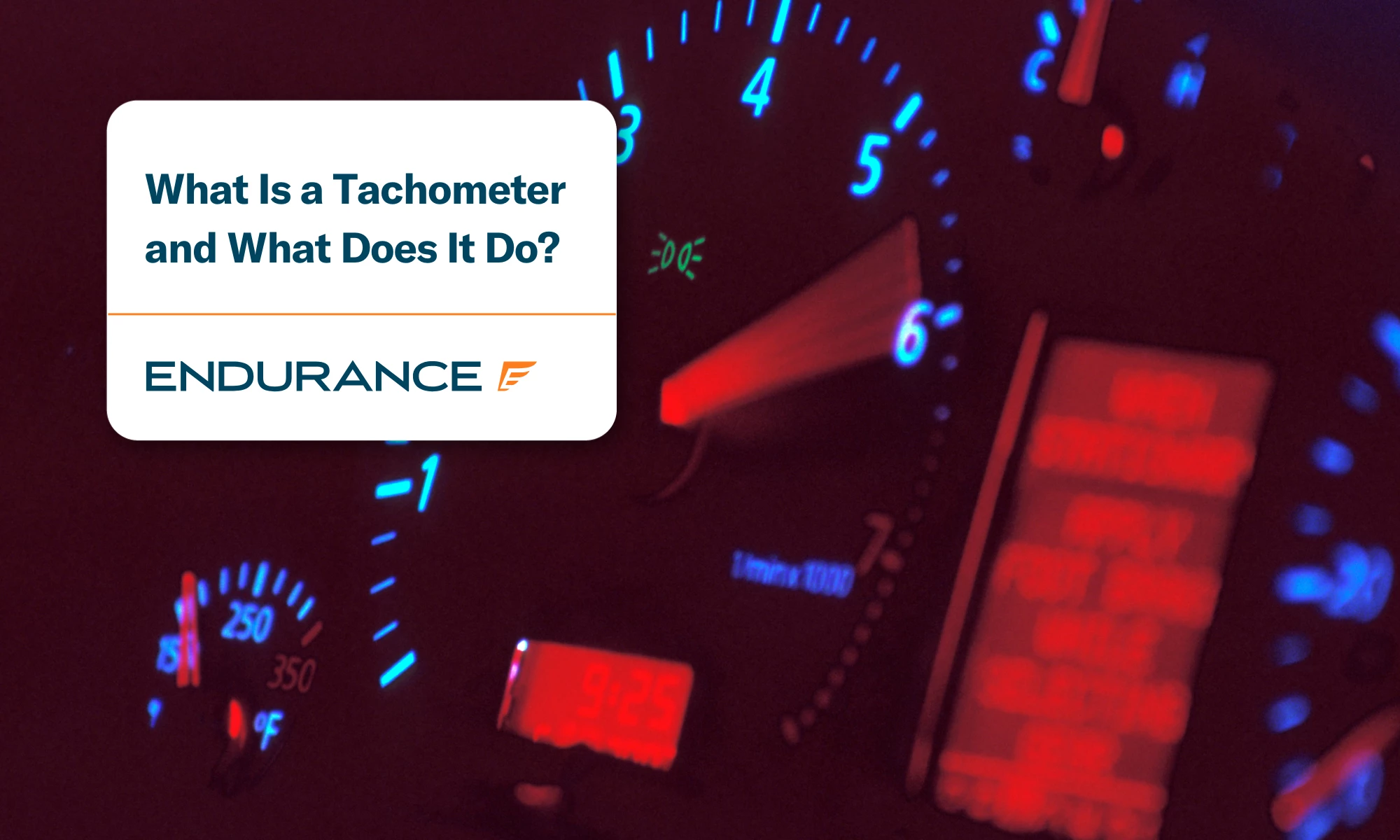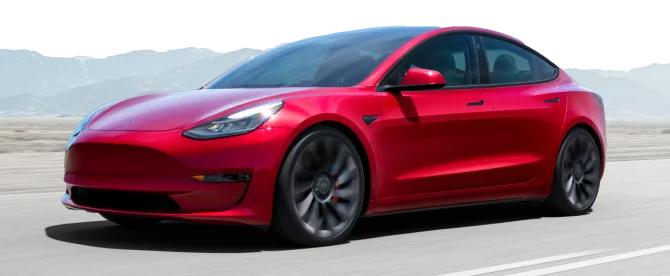Get this deal! Call now.
Speak with a vehicle protection plan specialist and get $300 off any new contract instantly.
Call 866-678-4172
or scan the code below


Tachometers do more than just take up space on your dashboard. They deliver critical engine data in real time. From helping you avoid engine strain to fine-tuning your gear shifts, this gauge plays a vital role in vehicle performance. Keep reading as we explore the working principle of the car tachometer and how this speed measurement device has changed over the years. We’ll also look at where the future might take car tachometers.
Tachometers (or “tachs” or “tachos”) date back two centuries when they were first used to measure engine speed in industrial equipment and later in locomotives. Eventually, these rev counters made their way into automobiles to help early motorists monitor a car engine’s rotational speed, measured as revolutions per minute (RPMs).
Tachometers were essential for yesterday’s drivers to know when to change gears, as manual transmissions were the only gearbox option. The clutch pedal is pressed at specific points on this engine RPM gauge, and the gear shift is performed to ensure smooth driving. Before tachometers, gear changing was more intuitive as motorists had to listen to engine sounds and keep an eye on the speedometer.
Initially, automotive tachometers used weights connected to the engine’s crankshaft to measure rotation speed of a shaft via centrifugal force. In the mid-20th century, tachometers shifted to electromagnetic technology to calculate engine speed. By the 1980s and 1990s, electronic tachometers became standard as digital systems provided ready access to engine speed information. More recently, LCD-based digital tachometers have replaced mechanical units, requiring less calibration.
Tachometers remain vital in many modern vehicles, including EVs and hybrid cars, but often go beyond traditional function. The tachometer in electric vehicles can display motor speed or power output percentage rather than traditional RPMs. Further, the vehicle’s energy management system is usually incorporated into the driver information display, which helps maximize efficiency and warns of excessive power drain, like during acceleration.
The tachometer’s importance in hybrids can’t be ignored, either. Here, tachs frequently serve two roles: monitoring the combustion engine’s active RPMs and displaying electric motor performance when running on battery power. This dual functionality enables drivers to squeeze the most out of a gallon of gas and be more observant when electric-only power kicks in.
Unlike the monochromatic and analog tachometers of the past, modern hybrid tachs are often based on digital display technology. This approach allows color coding or other visual cues to indicate the current power mode (gas or electric) and encourage more efficient driving.
Simply put, there are no real reasons why a car with an automatic transmission needs a tachometer. A driver could go on until their tank goes empty and never need to know what their engine speed is or what gear they have been driving in.
Some cars with automatic transmissions have modes that simulate manual control over the gears. Even still, the car’s computer in automatic vehicles actively prevents drivers from foolishly over-revving and/or “redlining.” If you try to work against the transmission’s design, the computer will cut the fuel supply.
The real reason most cars have a tachometer is cosmetic. Without a tachometer, the car dashboard could wind up with a blank space. Some automakers fill the area with a supplemental infotainment or navigation screen, which only adds complexity and cost to mainstream vehicles.
There is nothing to stop automakers from changing the dashboard of a car with an automatic transmission except safety regulations and their own imaginations. However, a tachometer, even in zero-emissions cars, is an advantage because it alerts the driver that the car is indeed running. But in an era of keyless ignition and silent EVs, it remains to be seen if that one simple convenience remains.
As mentioned, tachometers aren’t a must-have feature for most automobiles manufactured today. Sports cars with manual transmissions are about the only vehicles that make sense, along with the handful of economy cars that still come with a stick. In these cases, tachometers are crucial tools for drivers to monitor engine performance and better control the gears.
However, the rise of hybrid and electric powertrains and the steady improvement in autonomous driving systems fundamentally change what information drivers need to see. Tesla’s recent announcement of the Cybertaxi reveals a self-driving car without a steering wheel or pedals. It’s a safe bet that a tachometer won’t be on the equipment list. Preliminary pictures show that the Cybertaxi has a dashboard screen, which will likely display climate controls, journey progress, system status, and other details.
Since these vehicles handle all driving decisions independently, mechanical feedback tools like tachometers become irrelevant. Remote monitoring can keep system operators informed, so passengers only have to worry about going from Point A to Point B.
Even the average EV doesn’t require the same level of driver monitoring as a car with an internal combustion engine. Future displays could take range estimates, charging status, and efficiency projections to the next level.
This shift away from mechanical systems is part of a broader trend in automotive technology. Modern cars are rolling computer networks and digital displays, making changes possible through software updates rather than new components. As vehicles become more automated and electrified, the emphasis will likely continue toward displays prioritizing connectivity, entertainment, and journey planning over mechanical performance metrics.
While tachometers may eventually follow the dodo bird into extinction, they remain prevalent. Being watchful about tachometer readings can offer valuable insight into car troubles before a breakdown or other problems.
Here are vital readings to be alert to:
When the tachometer shows RPMs that don’t match the engine load, it often indicates more serious problems. For example, if the tachometer shows high RPMs during low-speed acceleration or casual driving, then a visit to your mechanic is necessary. Other troubling signs include:
These red flags are even more troubling when accompanied by unusual engine sounds, decreased performance, or increased fuel consumption. Erratic tachometer behavior can also be caused by problems with the engine control module (ECM) or related sensors.
Tachometer readings provide a deeper look into long-term vehicle health, revealing issues that may be covered under an Endurance auto protection plan. An extended warranty, also called a vehicle service contract or vehicle protection plan, safeguards critical components like the engine and transmission. Keeping an eye on the tachometer can catch problems early before the trouble escalates into major repairs.
But being observant only goes so far; there’s still the potential for pricey visits to the mechanic. This is where Endurance coverage steps in. Even our company’s most affordable plan offers essential powertrain protection that can take the worry out of erratic tachometer readings. Expanded options add coverage for more systems, like electrical, air conditioning, and suspension. Endurance even offers a plan with protection most similar to the manufacturer warranty that accompanies a new car.
Endurance plan holders also benefit from a world of perks like 24/7 roadside assistance with towing support, trip interruption protection, and rental car reimbursement. Importantly, Endurance customers can choose any licensed service center for covered repairs. In addition, every plan includes a year of Elite Benefits. Just pay a small activation fee for access to up to $2,000 in valuable extras that include tire repairs and replacements, key fob replacements, collision repair discounts, and more.*
Protect your investment with an Endurance Warranty. Visit the Endurance online store for instant pricing and plan details, get a FREE quote online, or speak directly with an Endurance advisor at (800) 253-8203 to find the perfect coverage for your vehicle.
Explore the Endurance blog, a vast library of insightful articles about DIY maintenance, car repairs, warranty advice, vehicle reviews, and other pertinent topics.

We're here to make sure you get the most comprehensive EV protection. That's why we've partnered with Xcelerate Auto to offer you transparent and dependable Tesla coverage.
Want us to contact you about XCare coverage for your Tesla?



Call for $300 off any new plan!
By clicking the button, you consent to Endurance using automated technology to call, email, and text you using the contact info above, including your wireless number, if provided, regarding auto protection or, in California, mechanical breakdown insurance. You also agree to the Endurance Privacy Policy and Terms and Conditions. Consent is not a condition of purchase, and you can withdraw consent at any time. Message and data rates may apply.
Speak with a vehicle protection plan specialist and get $300 off any new contract instantly.
Call 866-678-4172
or scan the code below



Simply fill out the information below and we will follow up fast with your free no-obligation quote.
By clicking the button, you consent to Endurance using automated technology to call, email, and text you using the contact info above, including your wireless number, if provided, regarding auto protection or, in California, mechanical breakdown insurance. You also agree to the Endurance Privacy Policy and Terms and Conditions. Consent is not a condition of purchase, and you can withdraw consent at any time. Message and data rates may apply.

To speak to a vehicle protection plan specialist and save $300
Scan the code below
Alex has worked in the automotive service industry for over 20 years. After graduating from one of the country’s top technical schools, he worked as a technician achieving a Master Technician certification. He also has experience as a service advisor and service manager. Read more about Alex.